Take a look at your fingers, what do you see? You’ll find a pattern of lines. These patterns are known as fingerprints.
Fingerprints are formed before you are born and they never change. They stay the same throughout your life.Your finger just gets bigger so your fingerprint is bigger but your pattern is the same.
No two people have the same ridge pattern. Not even identical twins.
Our hands are covered in ridges and these ridges help us grip things. We produce sweat and oil which stick to these ridges. When we touch dirt; oil, water, and salt mix stick to the dirt and everything we tough leaves a print known as our finger print.
Now we all think of fingerprints when we think of prints. But did you know that even your toes leave prints? Usually people wear shoes and toe prints are not left behind. But unless a person is planning on committing a crime or is touching something gross or dangerous we don’t wear gloves to cover our fingerprints because gloves are not very comfortable. Gloves also dry our hands or make us sweaty.
Fingerprint History
Alphonse Bertillon is the father of Anthropometry. He created a way to keep track of criminals and repeated offenders. Eleven measurements were recorded: A persons head length, head breadth, middle finger, foot length, forearm length, height, little finger, trunk, arm span, ear length, and cheek width. Now there was a big flaw in this system. In 1903, when two criminals by the name of Will West and William West had their eleven measurements compared they were surprised by how close their measurements were. They even looked a like but their fingerprints were so different. The William West-Will West case changed the way people were identified.
“From the Bertillon measurements thus obtained, (the record keeper) went to the file, and returned with the card the measurements called for, properly filled out and bearing the name, “William West.” This card was shown to the prisoner, who grinned in amazement, and said, “That’s my picture, but I don’t know where you got it, for I know I have never been here before.” The record clerk turned the card over, and read the particulars there given, including the statements that this man was already a prisoner at the same institution, having been committed to a life sentence on September 9, 1901, for the crime of murder.” – Authors Harris Hawthorne Wilder and Bret Wentworth (1918).
Make a history timeline by making rice crispy treats covered in fondant. Use edible markers to draw. After the lesson enjoy your treats.
Fingerprint Patterns
There are seven fingerprint patterns and twelve characteristic to your fingerprints. These are good to know because when a crime has been committed or a person is lost these patterns and characteristics help narrow people down.
What you need:
- white balloon
- ink stamp
- sharpie or marker
Lay the balloon flat, put your finger in the ink and then place the fingerprint on the balloon. Blow up balloon and label the balloon.
Solve the Mystery
You can make your own mystery to solve. You’ll first need to make a fictional story about a crime. Then describe five different possible subjects.
-
Chromatography:
Did you know that even tiny scraps of pater can be used in solving a crime? That ink can help solve a mystery? Pens have different inks which give them their color.
Try it yourself: Cut a piece of paper or paper towel. Use different pens. first put a line 1 cm from the bottom of the paper. On that line use different pens, draw small circles 1cm apart from each other. Use colors such as black, brown, green, red, and two black colors. Also add one dot that you have labeled as x. This is the criminal. Place the paper in water and watch the colors rise and spread out.
2. Material
Crimes can be solved by material that is left behind. Even small fibers left in a subjects finger nails can help solve a crime. Get random blue colored material. Show 6 materials to your child. One is labeled x. Match x to one of the materials. On the back of each material label each material with a name from your fictional story.
3. Blood
Use red dye. One is the suspects blood. Label that as x. Get red dye and dilute it 5 times.
4. Fingerprint
There are two types of fingerprints: latent prints and patent prints.
Patent prints:
Can be seen with naked eye. Dirty fingers leave patent prints.
Use five different figure prints and place fingers in inkpad and then on glass microscope slide. Label each with fictional name. The sixth needs to be labeled as x and must match one of the five. To make it easier you can make x as your thumb.
Latent Prints:
Can not be seen with the naked eye. We all have sweat glands that lie just beneath the skin. These sweat glands produce oils through tiny holes known as pores. When oil mixes with perspiration as the person touches something it leaves an image of the finger on water ever is touched: glass, door knobs, light switch, drinking glass, and window.
What you’ll need: a glass microscope glass, plastic glass, super glue, foil, hot water, and bowl.
Put five different fingerprints on glass microscope. Add one more which you’ll label as x. This x has to match one of the five fingerprints. Place fictional names on each slide.
In a plastic bottle put some aluminum foil. Place a drop of super glue of the aluminum foil. Next to the super glue place glass microscope glass with latent fingerprint. Close lid and place plastic bottle in a bowl with hot water. Leave for a few minutes and watch how the latent print becomes visible.
Fingerprint Art
All you’ll need is your fingers, ink pad, colored pens, paper, and your imagination. To help you get started you can first search “fingerprint art” and get inspiration from there.
Child ID Kit
We have had three scary incidences in our life and each time the fire department or police officer came I froze. I couldn’t remember when my child was born. I was too worried about what was happening. I could not think. Esther answered for me the last time and the officer asked who was the mother. While doing our fingerprint unit study we came across Child ID Kit. This is a paper that you fill out every six months. You take a picture of your child, make sure you take a fingerprint of each finger. Write down height and weight.
This kit is meant for if God forbid your child is missing. It is free.
Click here to go to link.
Thank you for reading our blog post. We share a new blog post every Tuesday and Thursday.

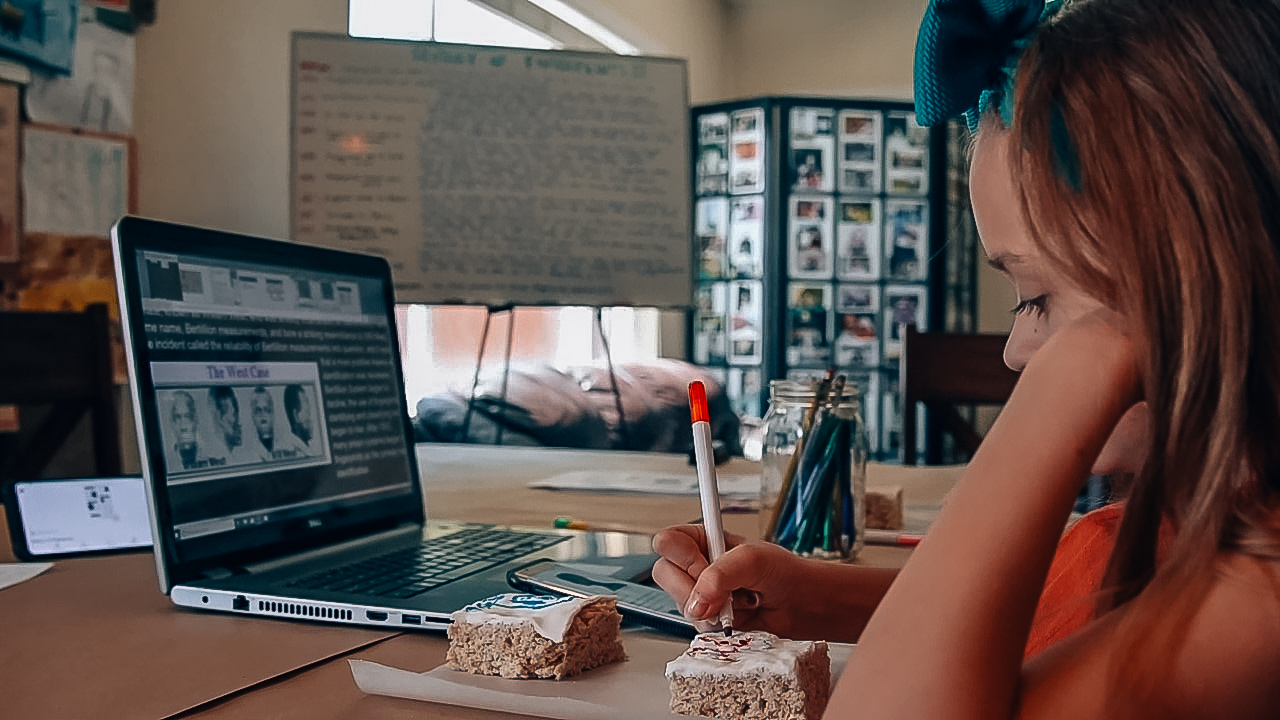
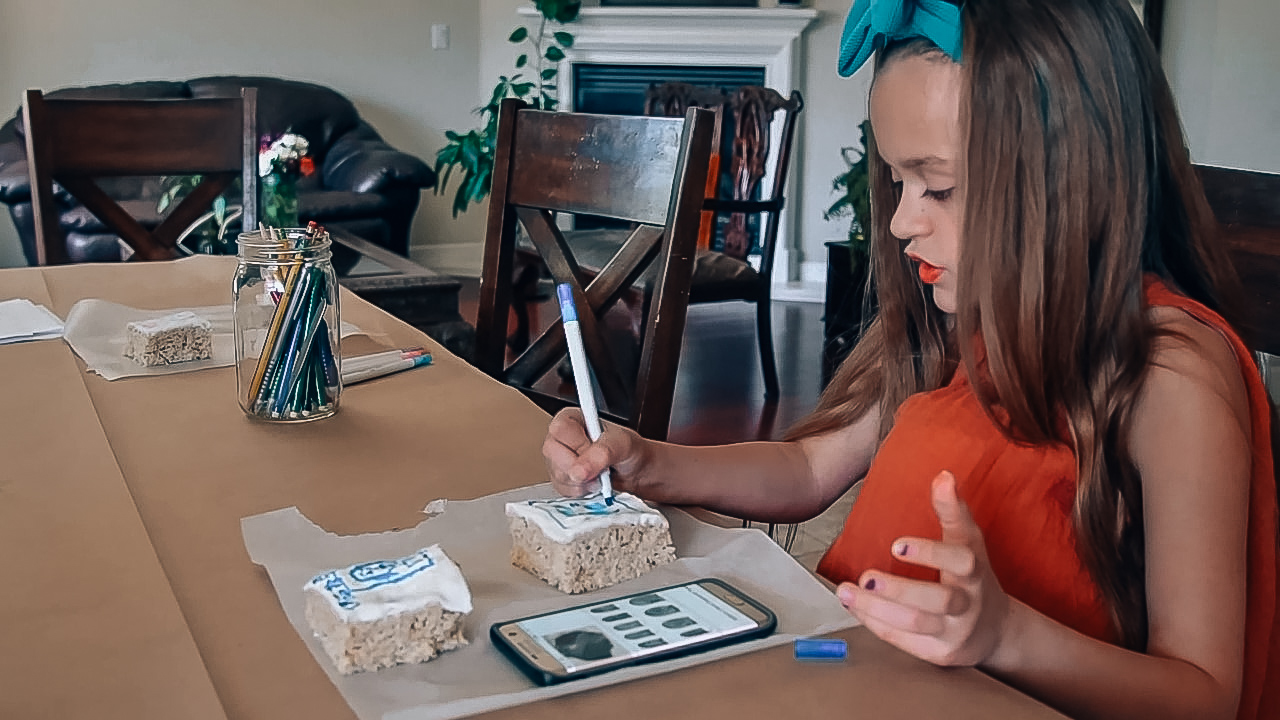
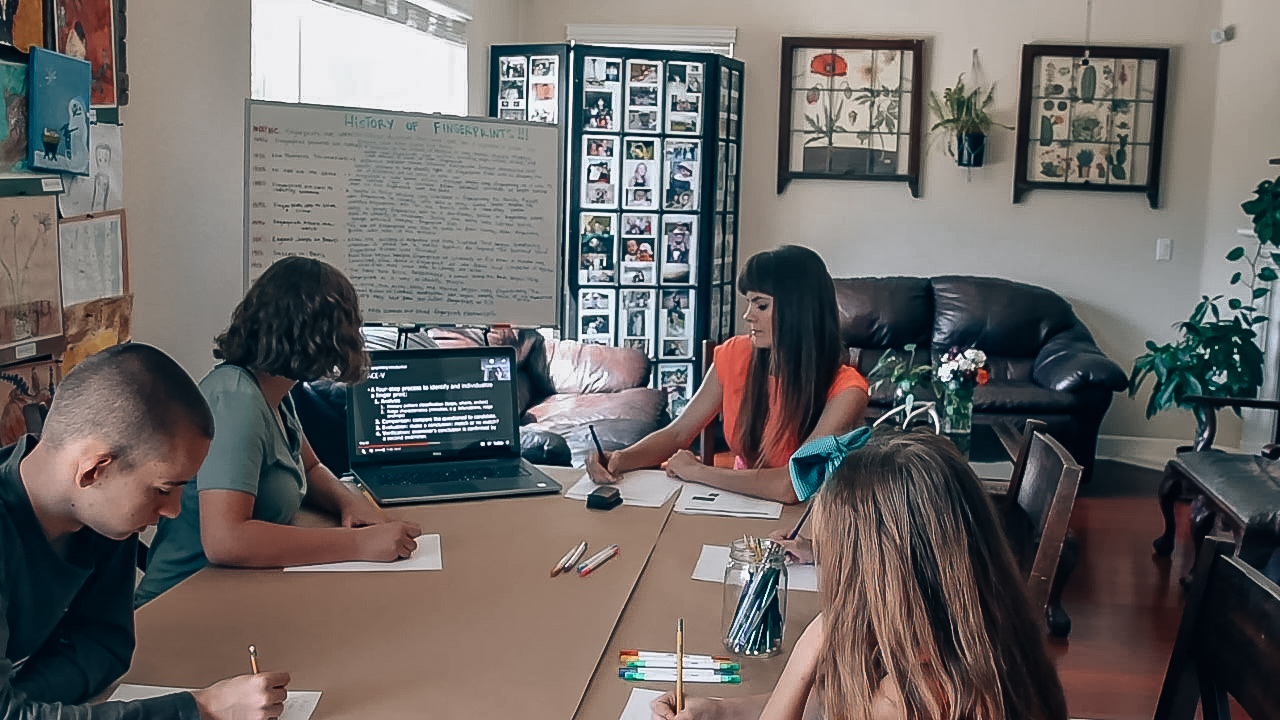
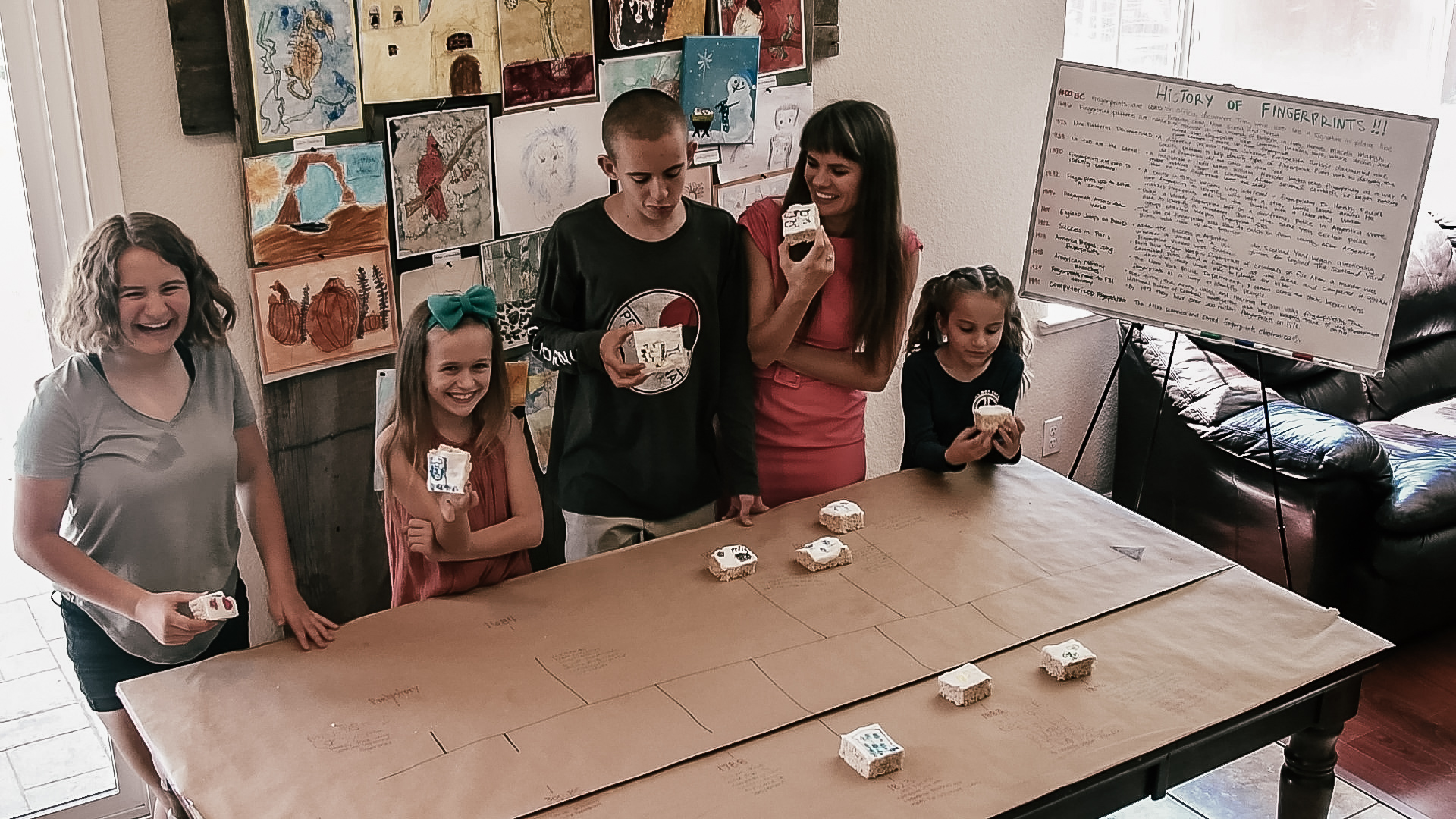
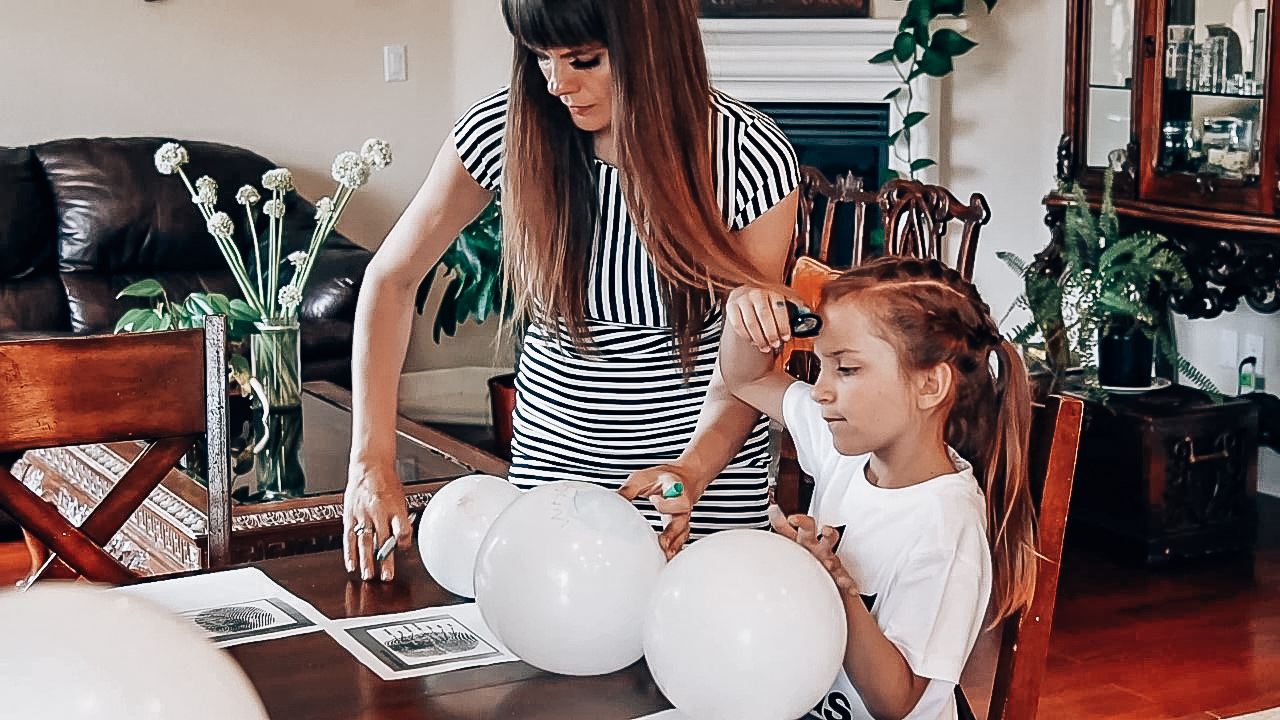
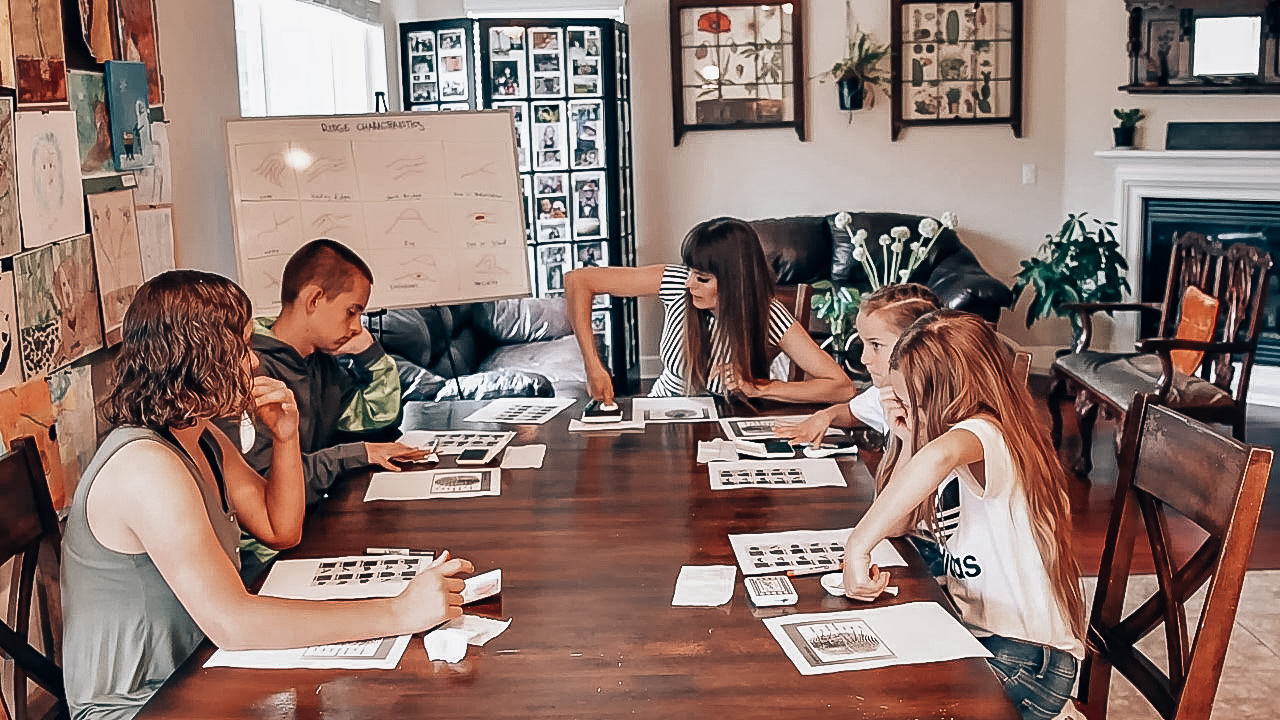
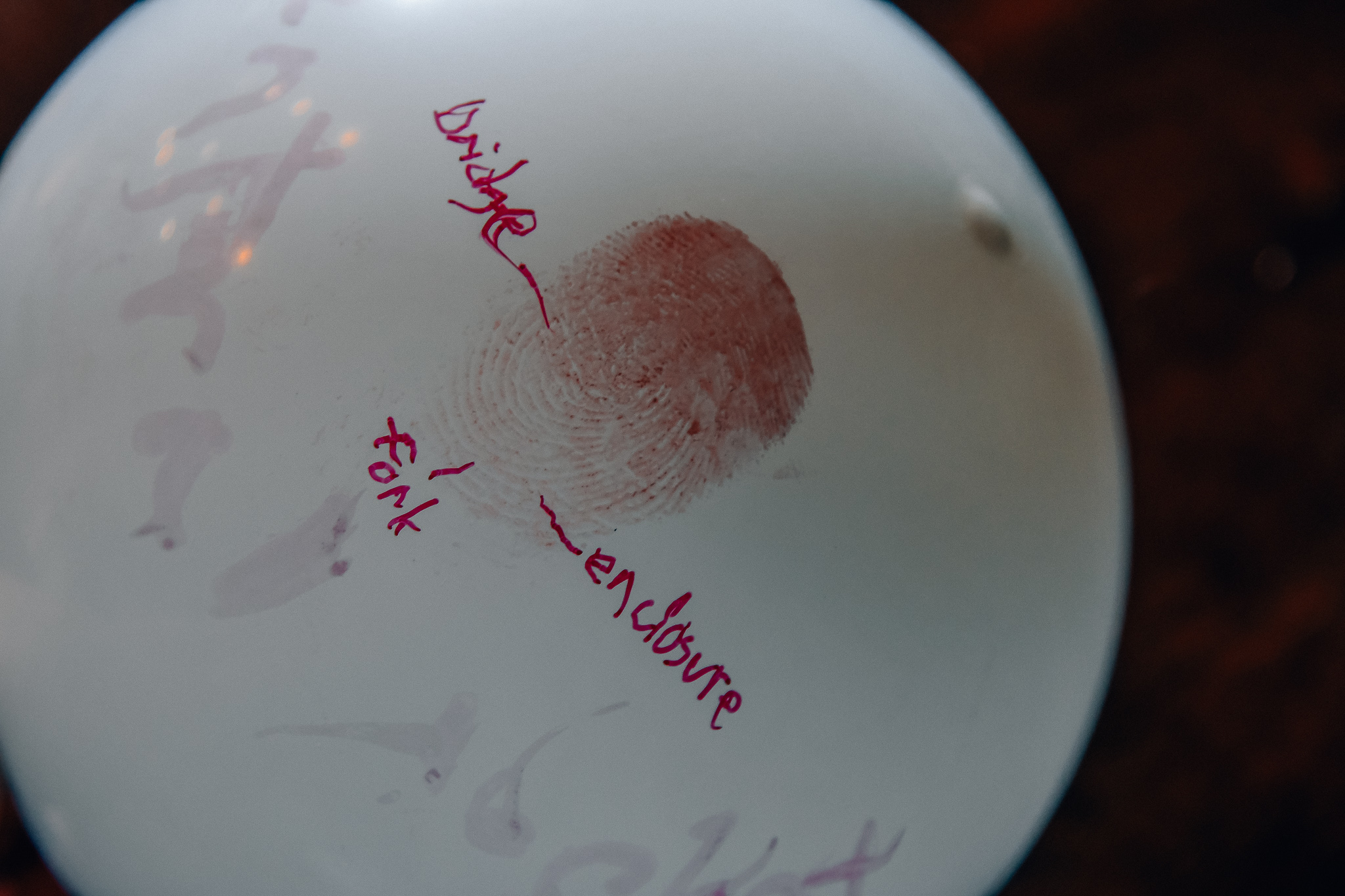
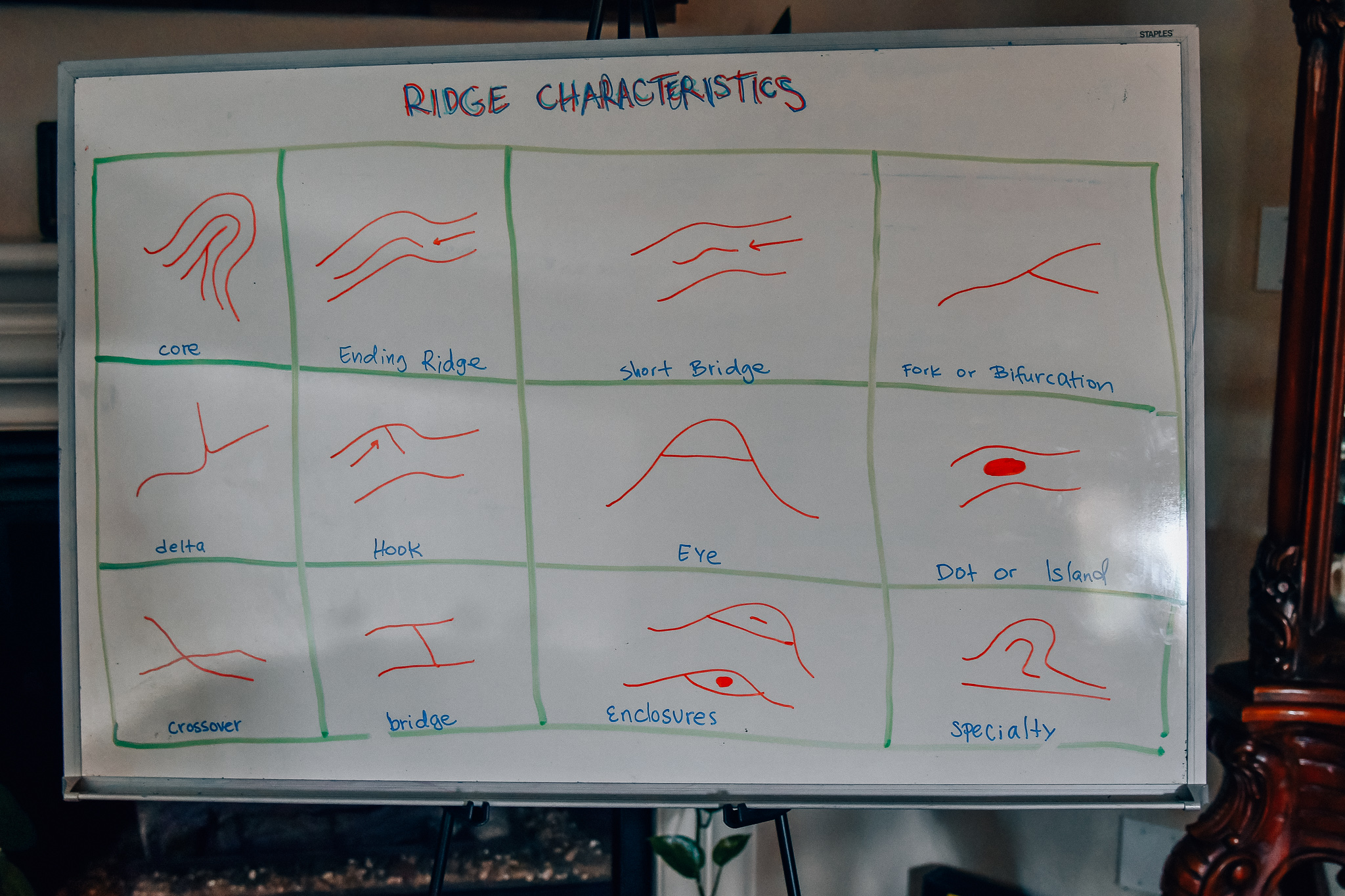
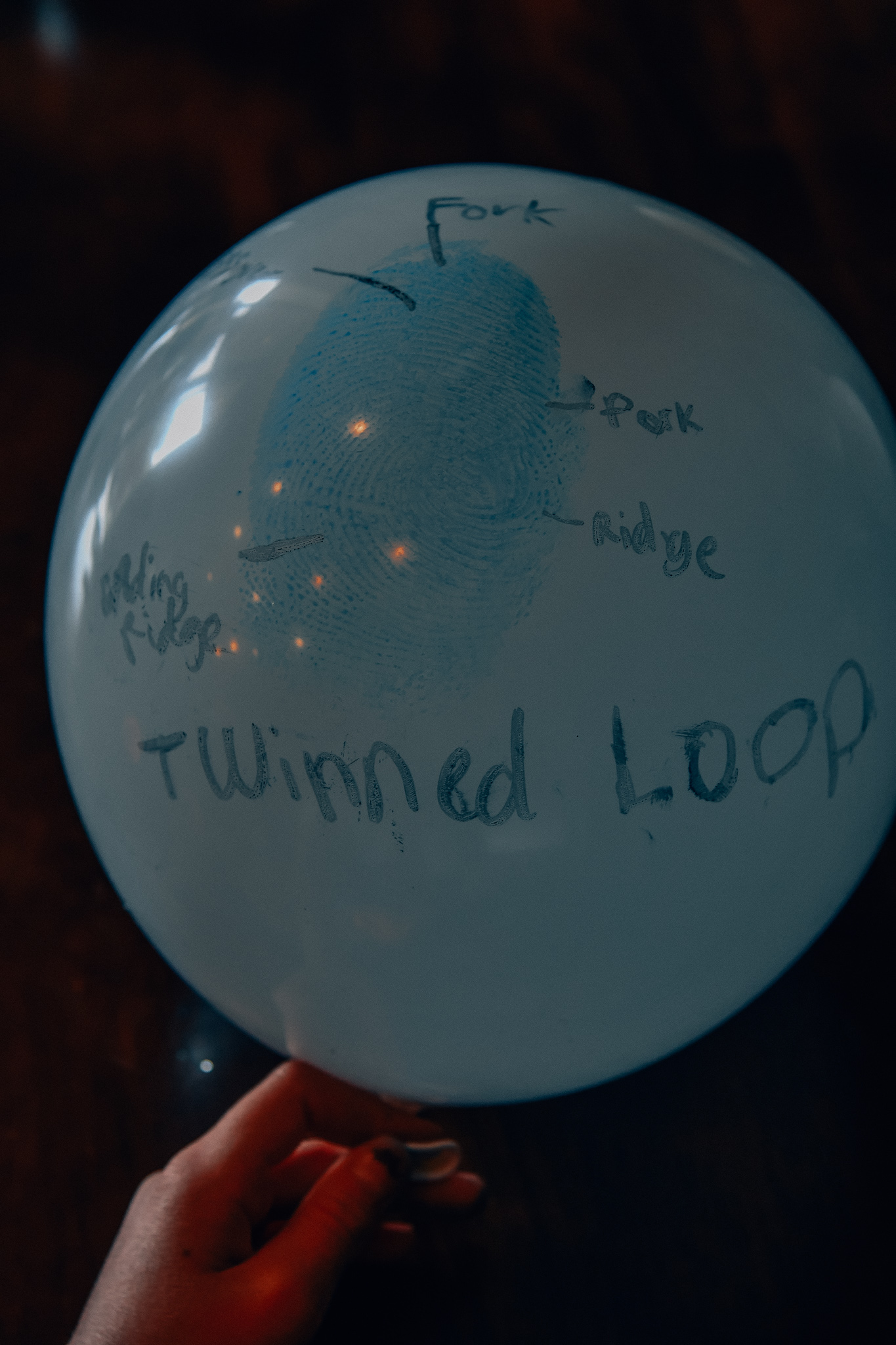
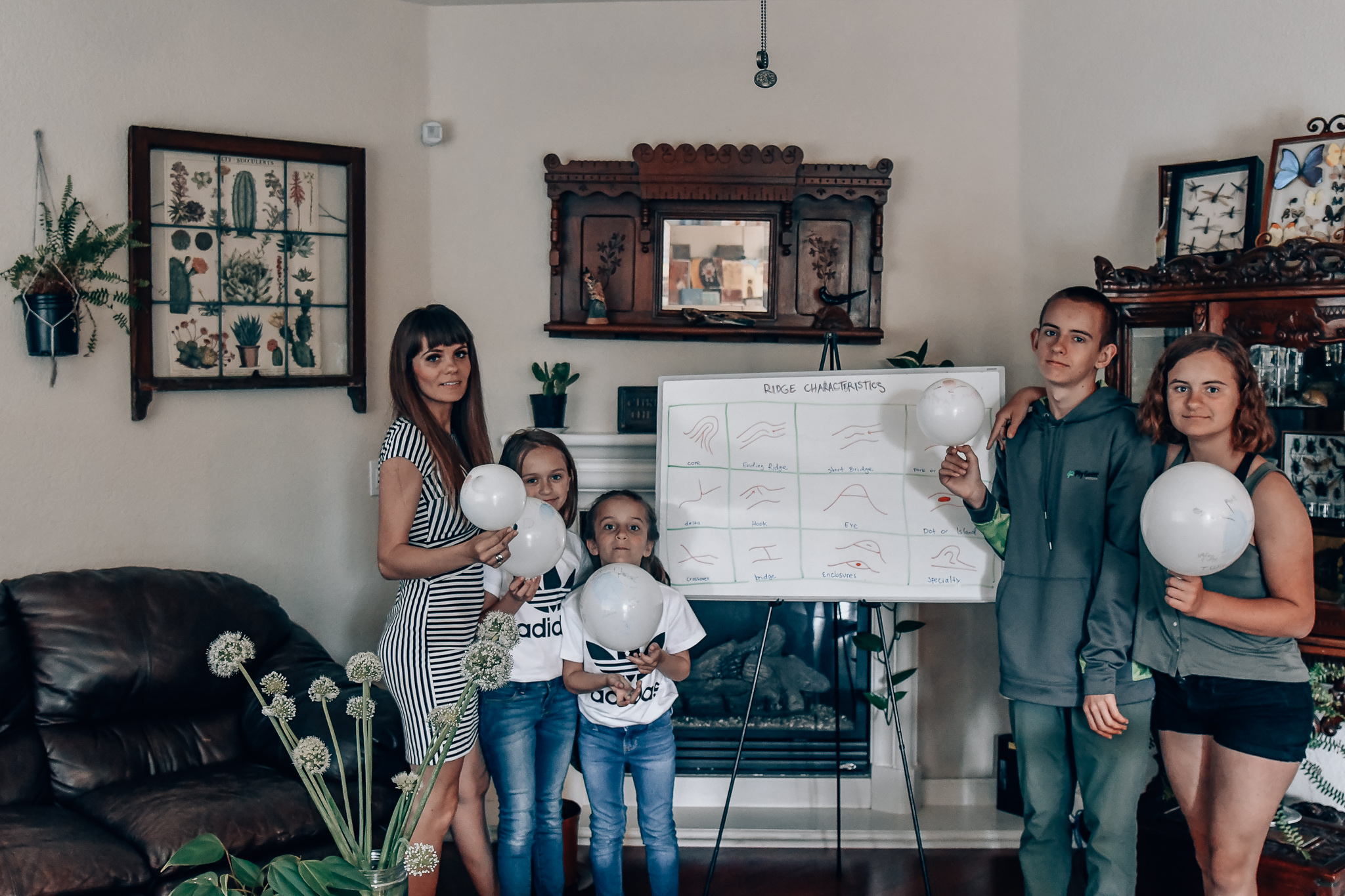

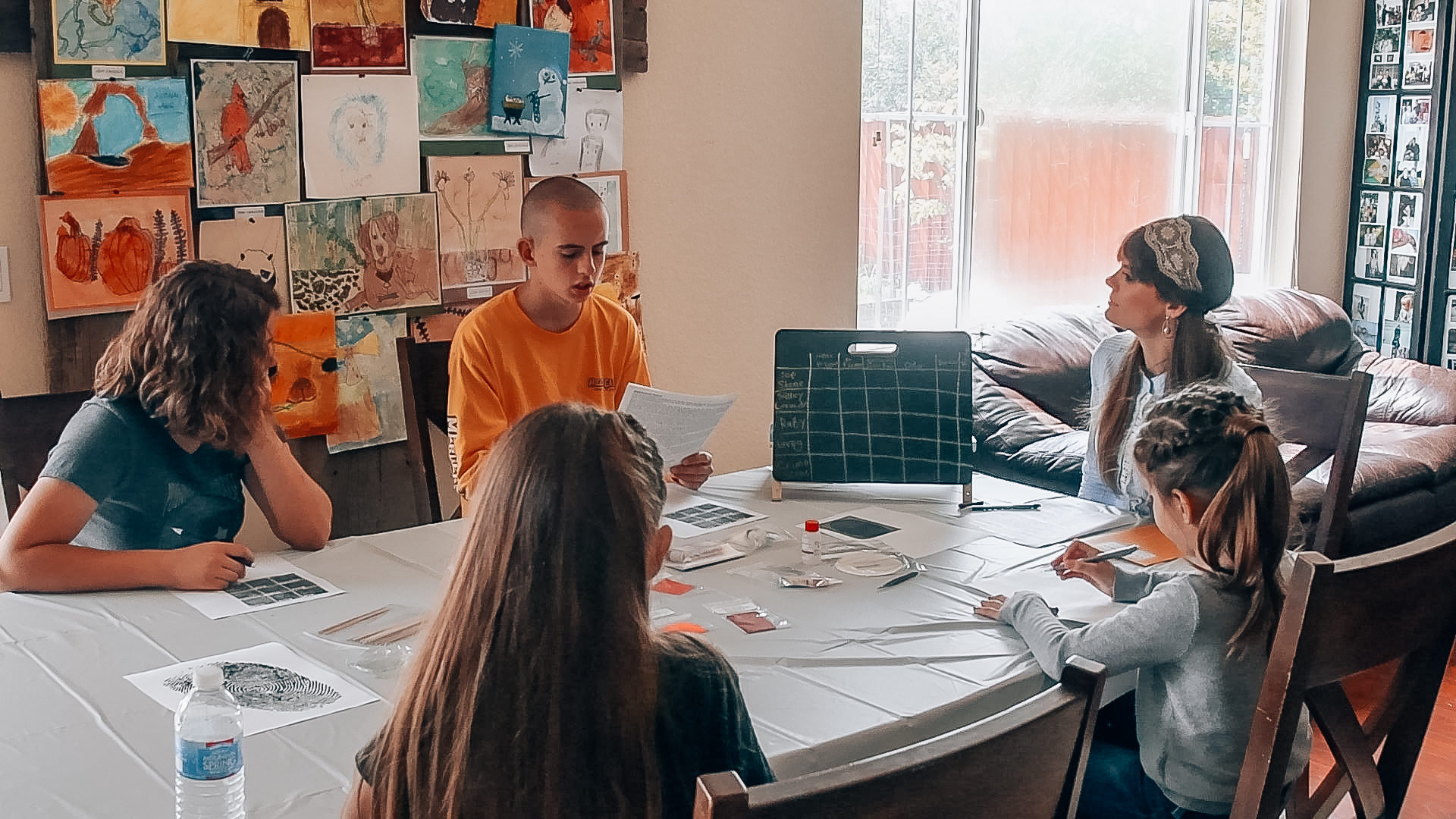
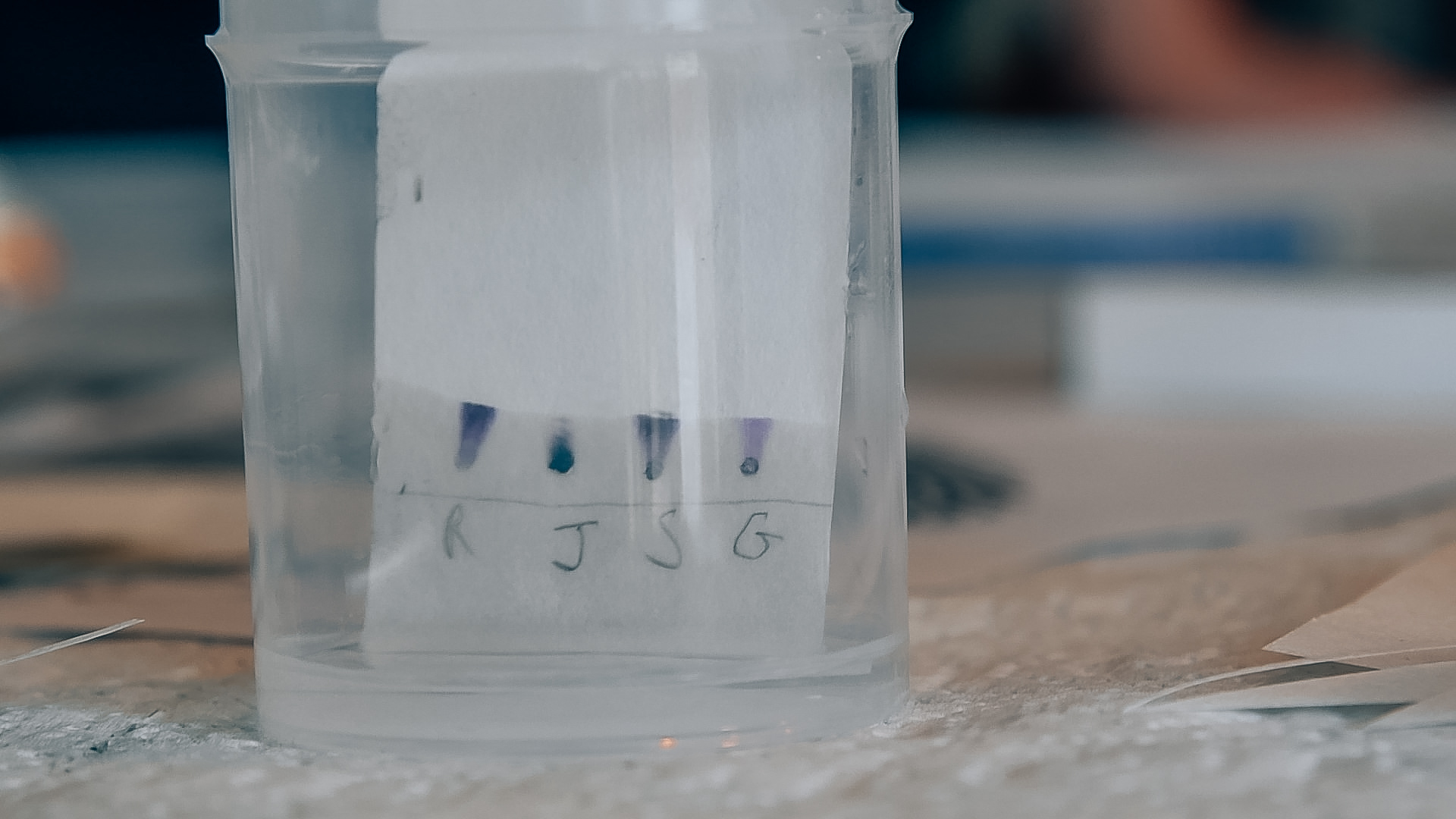
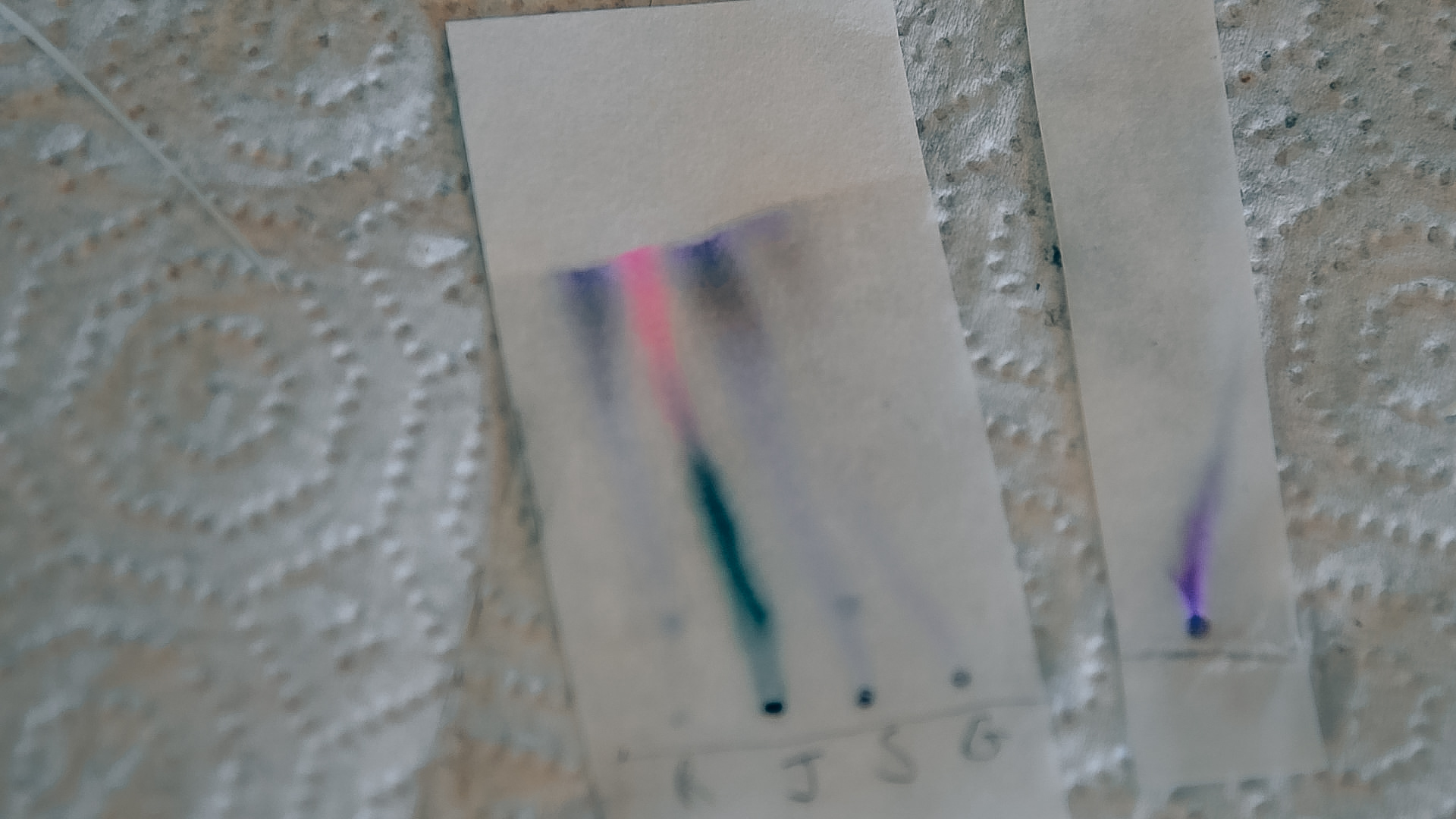
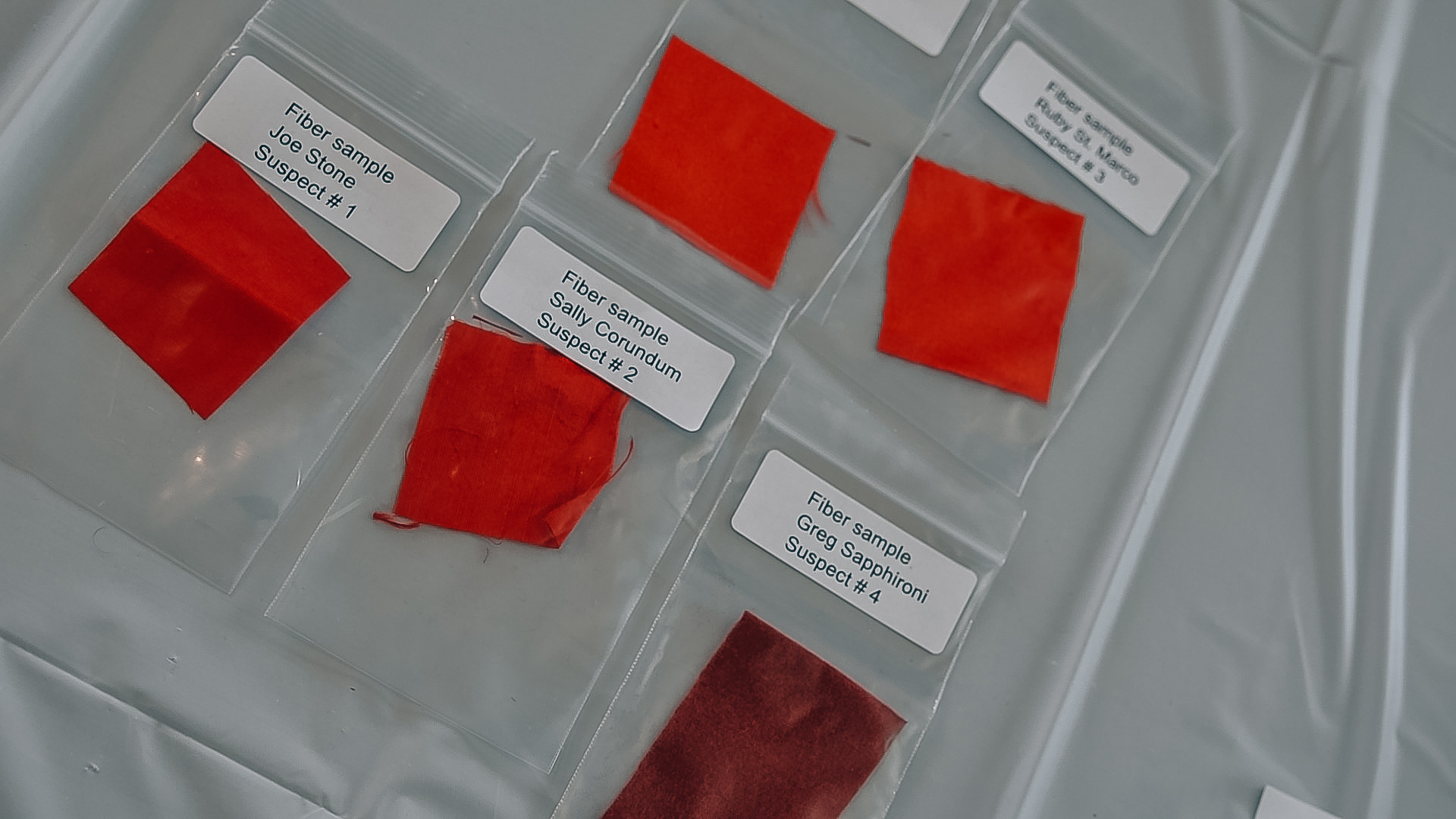
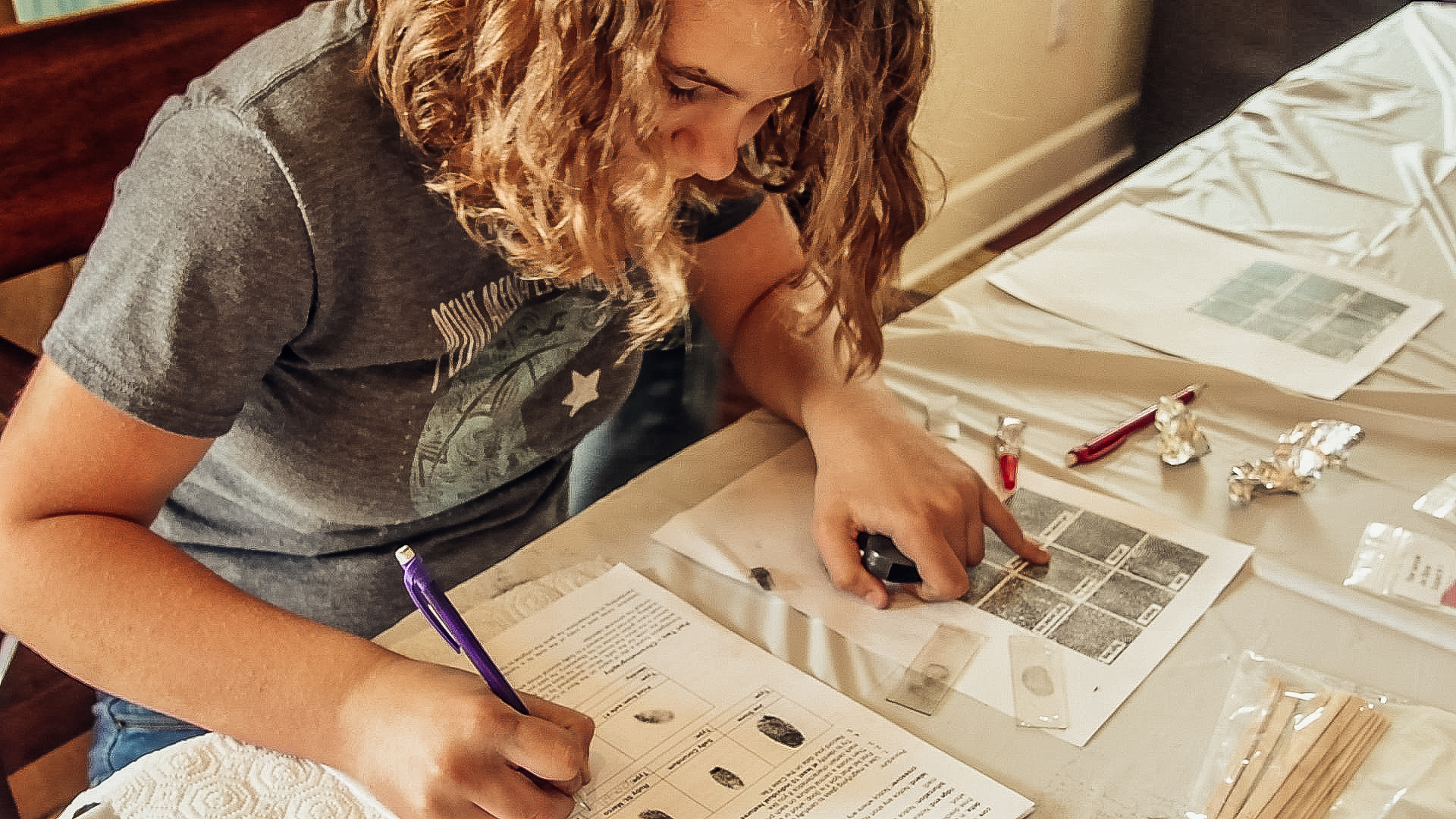
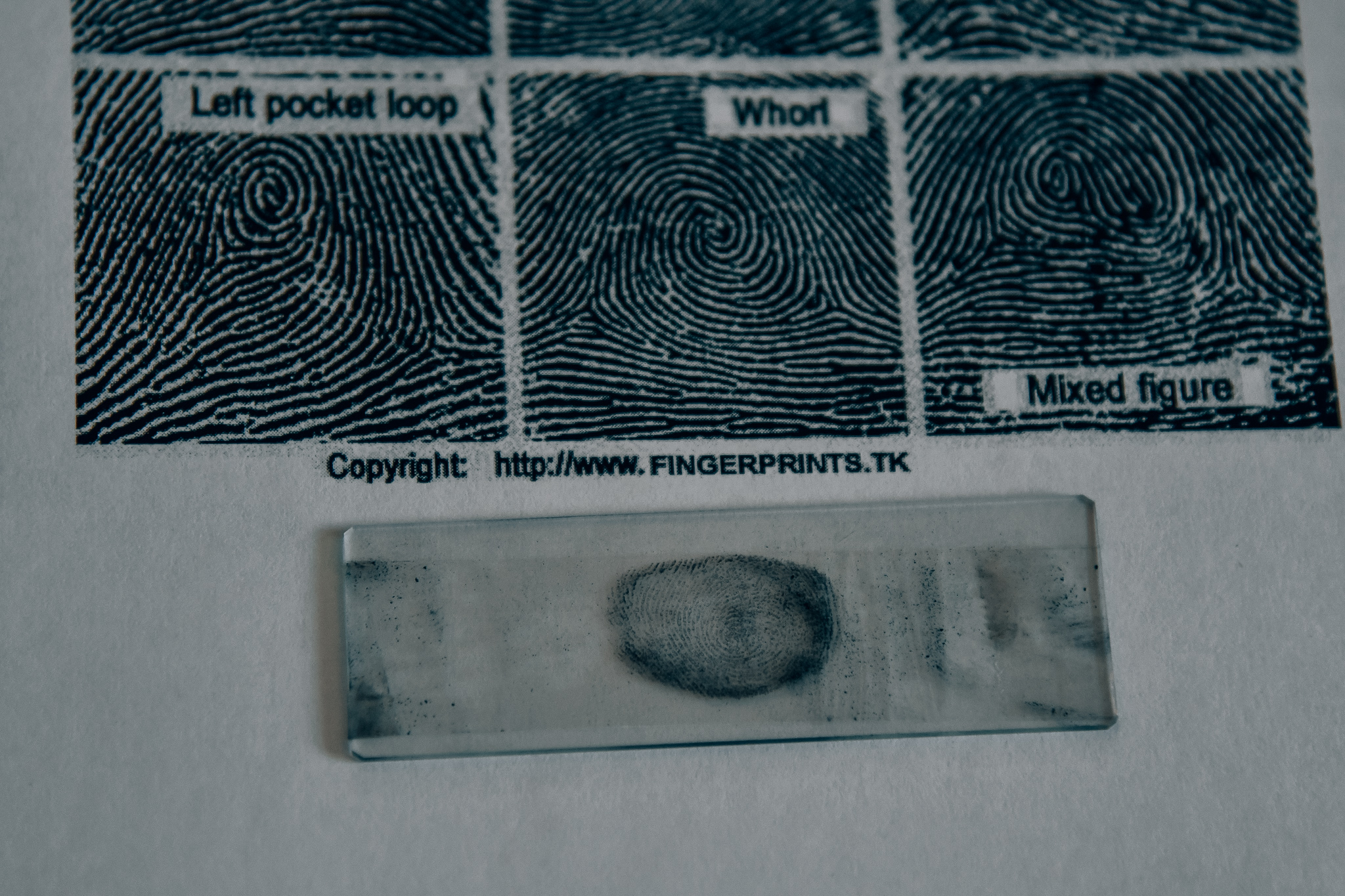
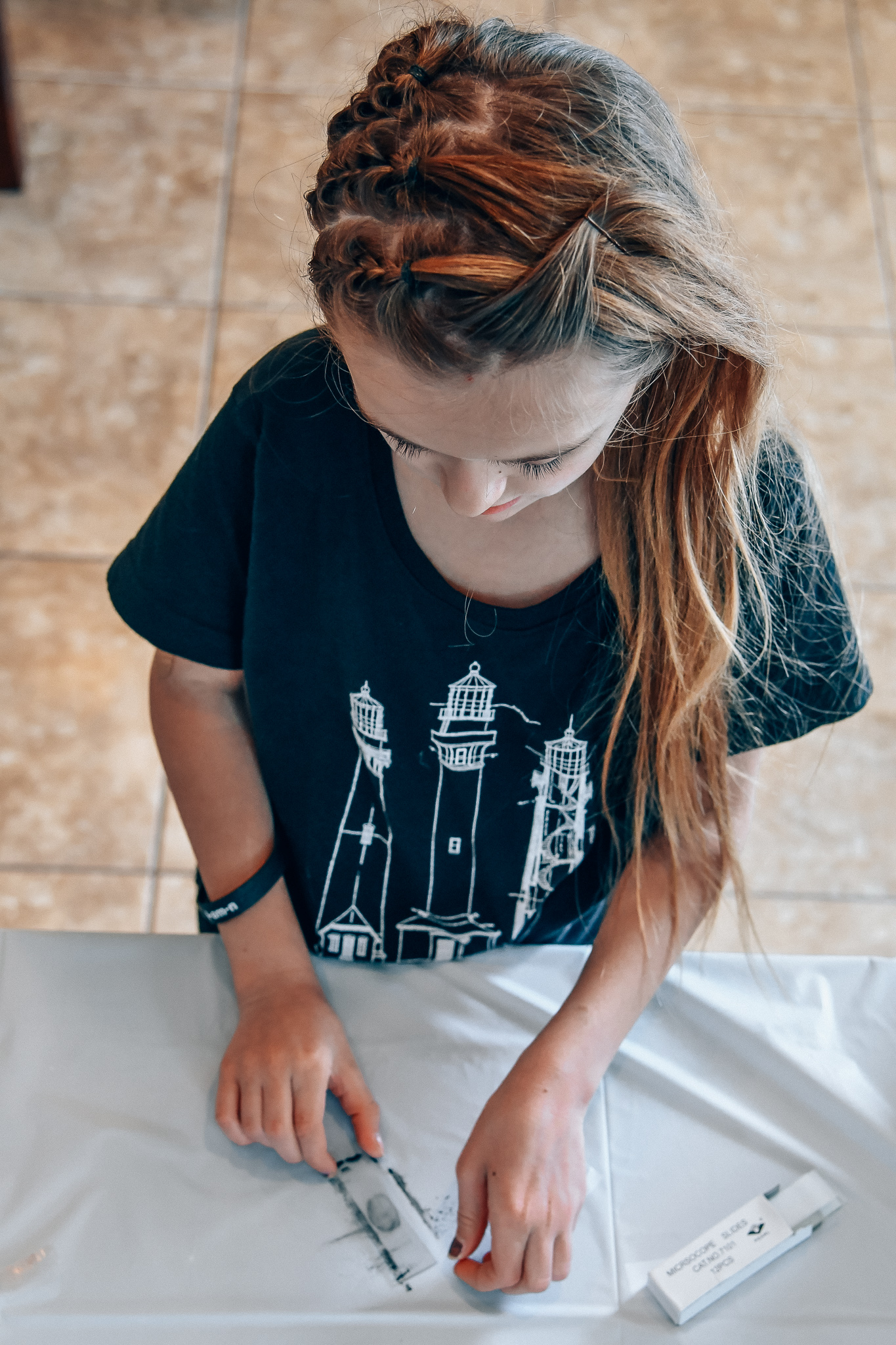
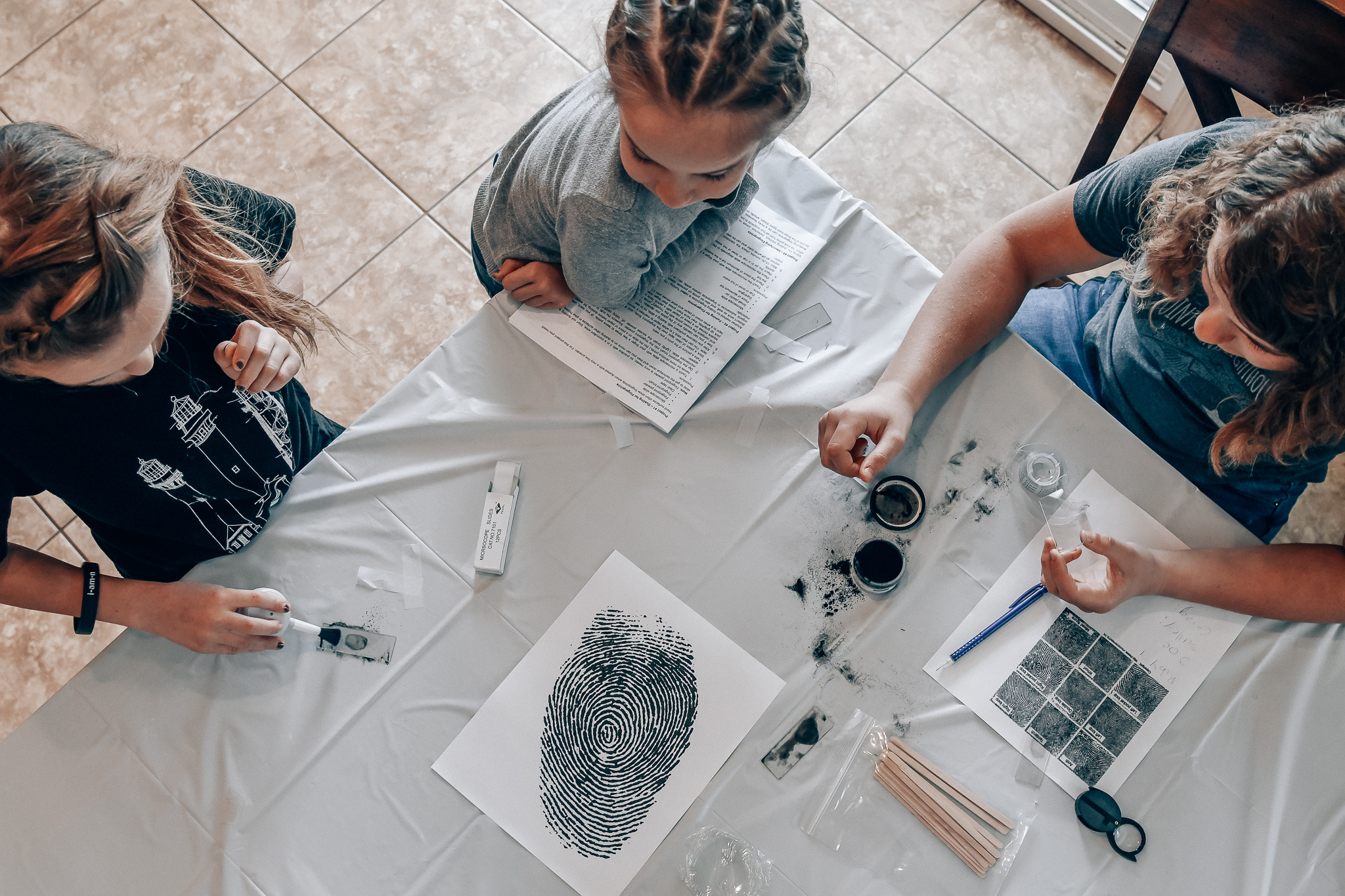
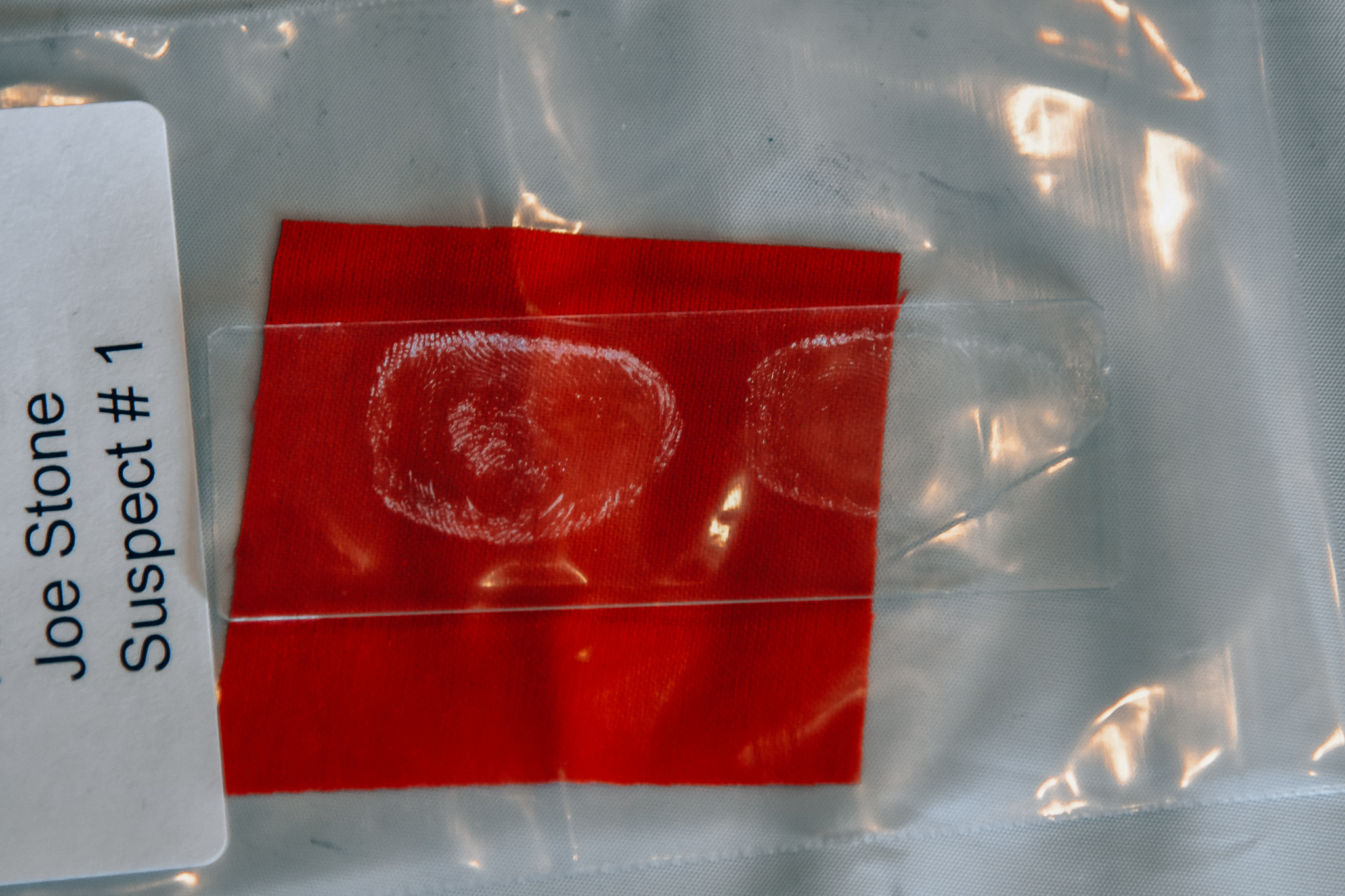
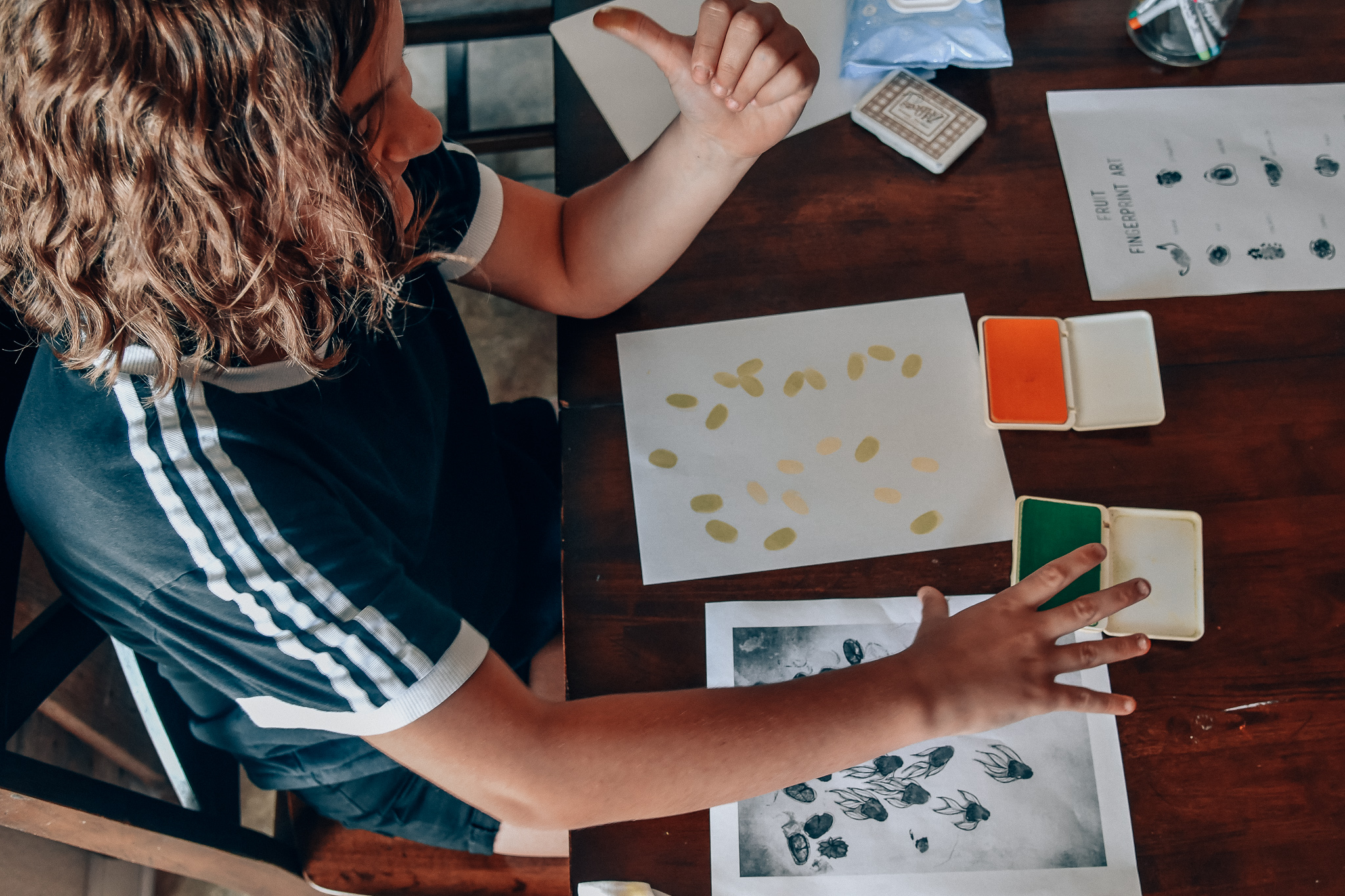

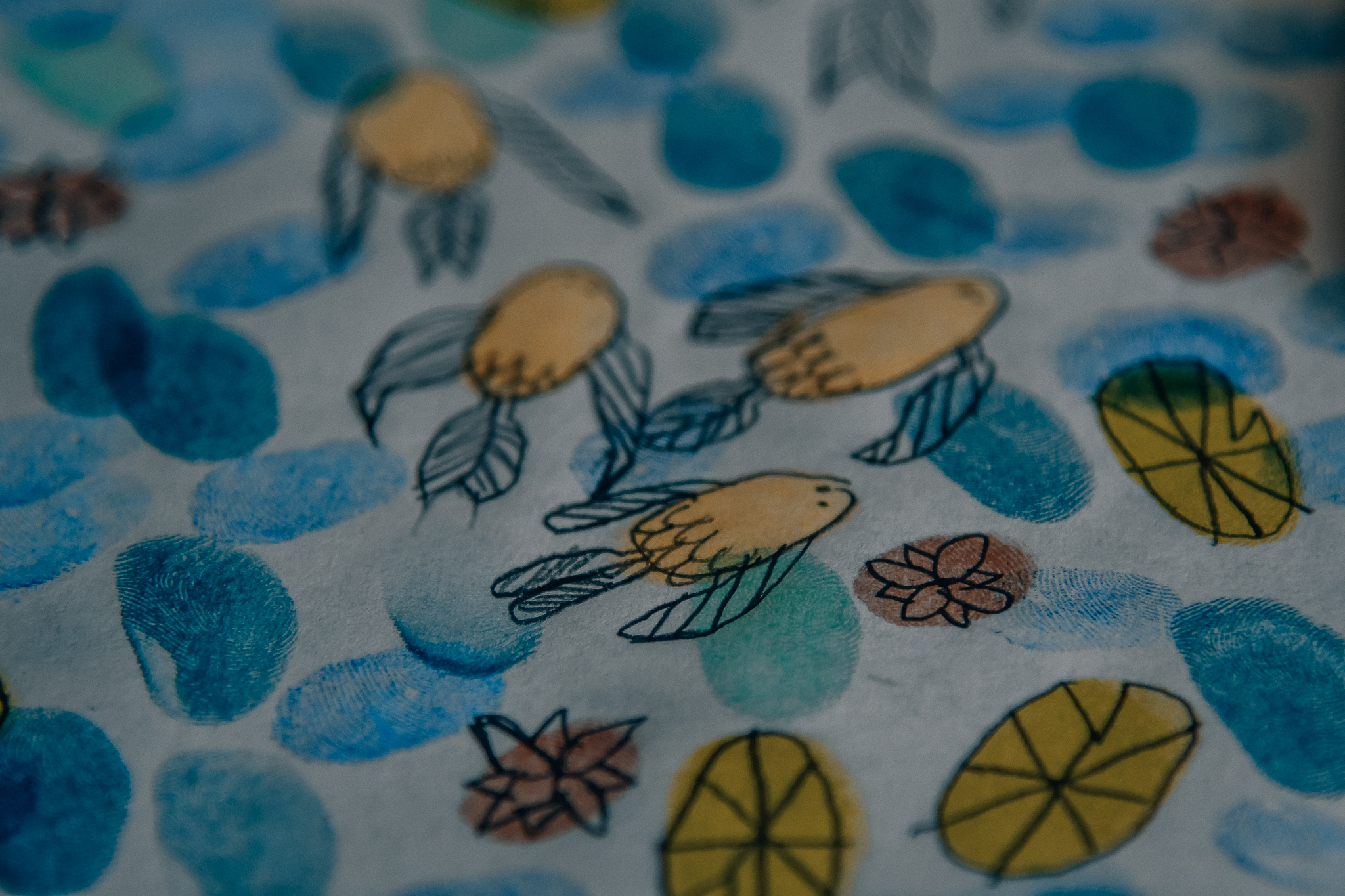
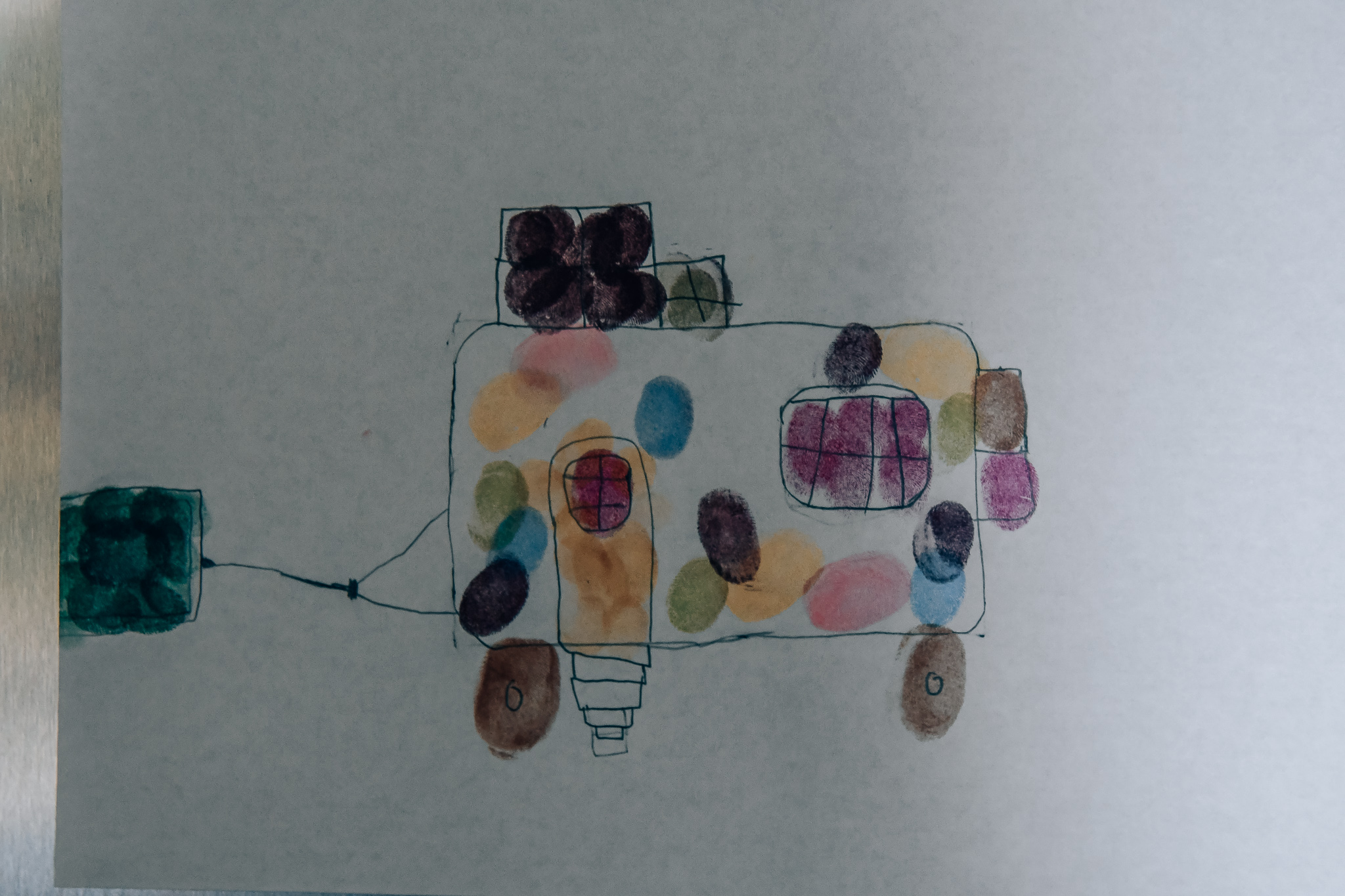
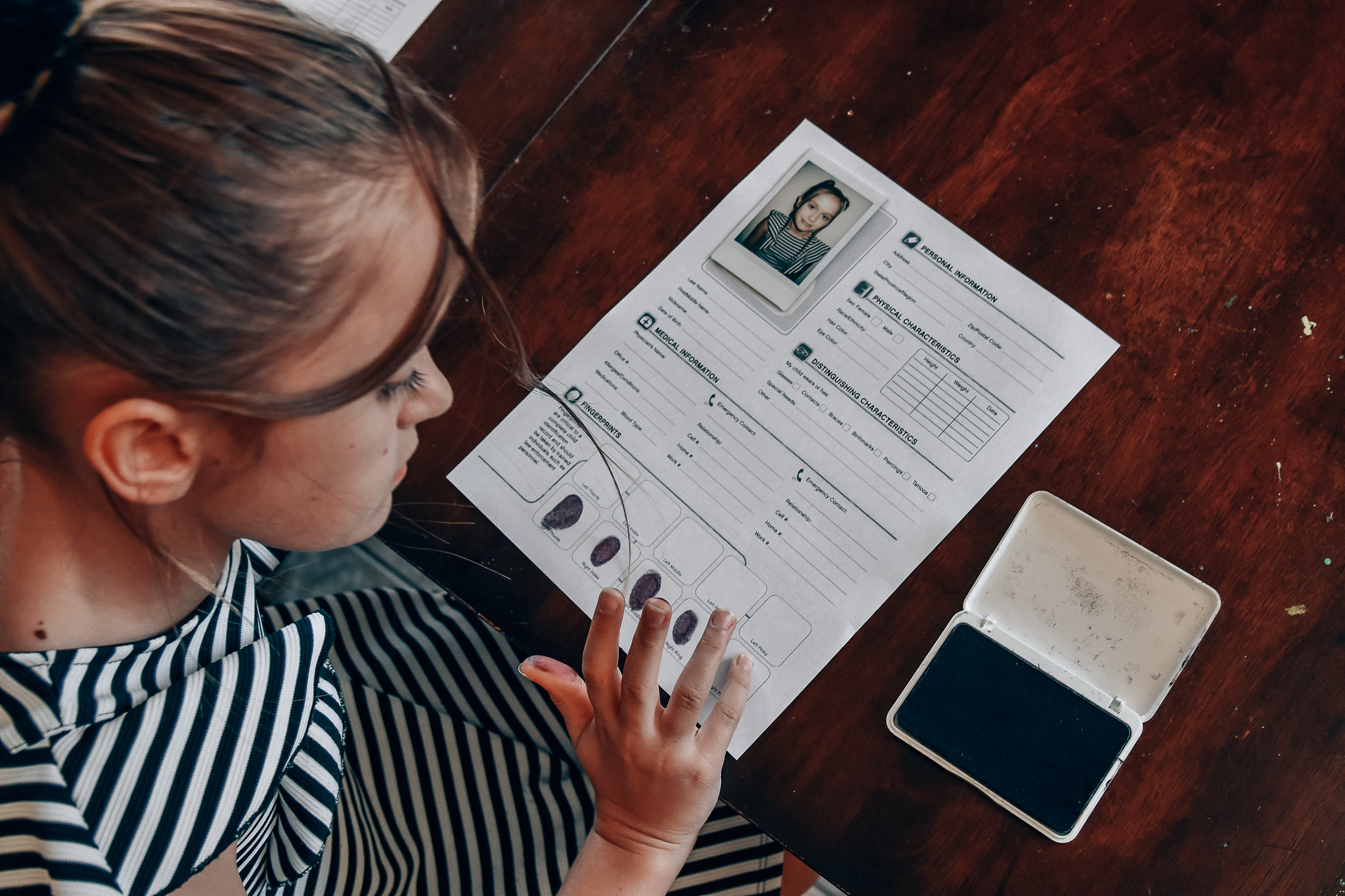
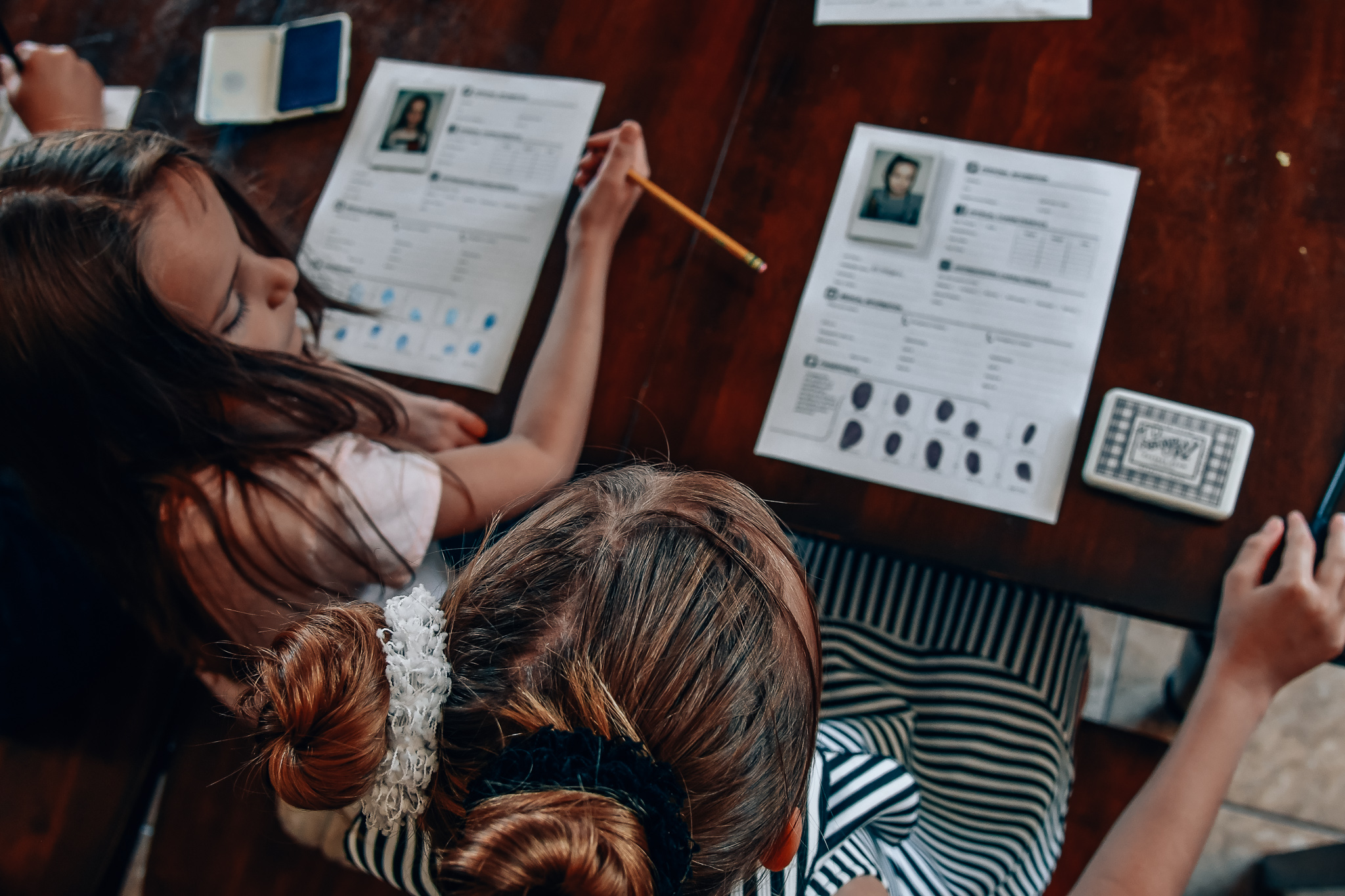
Christy
This is so fun!!!
Luciana
Thank you so much for taking the time to write and share all this wonderful ideas. I’ve been thinking about the child ID kit since the day you posted on Instagram and I need to do it too. God bless you and yours for all that you do and share. You’re a blessing!